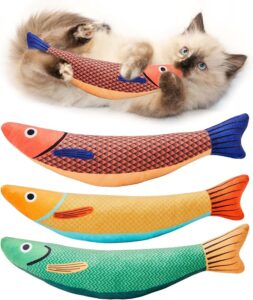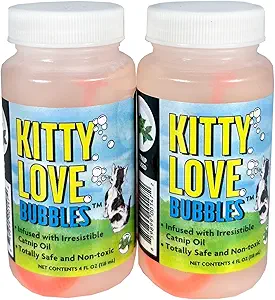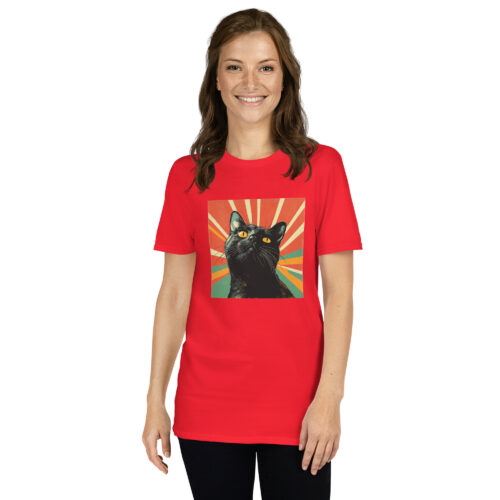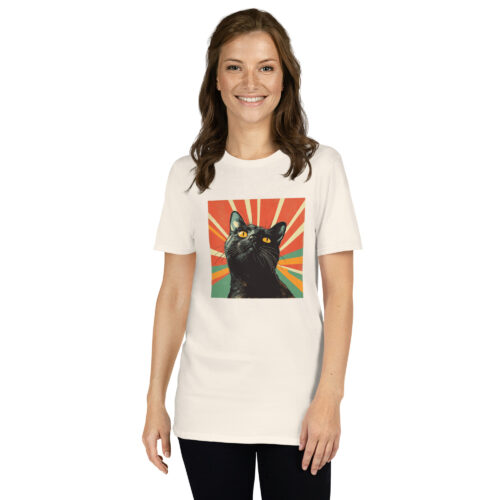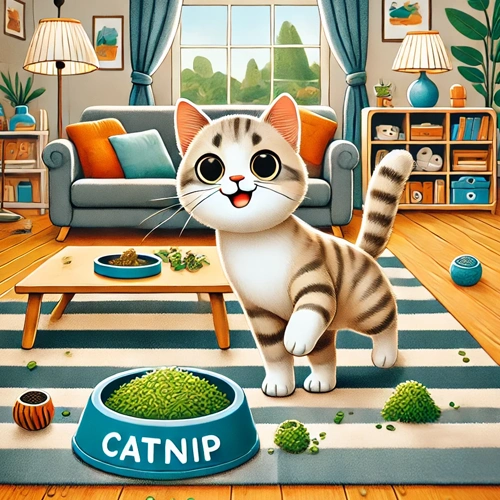
The Ultimate Guide to Catnip: Everything You Need to Know
Table of Contents
For many cat owners, catnip is synonymous with pure feline joy. But have you ever wondered why cats react so strongly to this magical herb? Whether you’re new to cat ownership or a seasoned cat parent looking to better understand your furry friend’s quirks, this comprehensive guide will tell you everything you need to know about catnip. From its benefits to safety concerns, this post will cover it all, helping you make informed decisions for your beloved pet.
What is Catnip?
Catnip, also known as Nepeta cataria, is an herb that belongs to the mint family. It contains a compound called nepetalactone, which is responsible for the ecstatic behavior we often observe in cats. Originally native to Europe and Asia, catnip is now commonly found in North America and is widely available as a treat for our feline friends.
How Does Catnip Affect Cats?
Catnip affects cats through their sense of smell. When a cat sniffs it, the nepetalactone binds to receptors in the nose, which then stimulate the olfactory bulb. This sends signals to the brain that trigger a variety of behavioral responses. Many cats will roll, rub their bodies on the floor, purr, and generally appear to be in a state of euphoria. This reaction usually lasts for about 10 to 15 minutes, after which your cat may lose interest for a while.
It’s interesting to note that sensitivity to catnip is inherited; approximately 50-75% of cats are affected, while others may not respond at all. Kittens under the age of three months typically do not react to catnip until they reach maturity.
The Science Behind It: Why Do Cats Love It So Much?
The primary active compound in catnip, nepetalactone, is thought to mimic feline pheromones. When cats smell nepetalactone, it activates receptors that lead to euphoric behaviors. Essentially, it’s a form of stimulation that some compare to how humans might respond to recreational substances. Luckily, catnip is non-addictive and completely safe for cats!
Common Reactions:
- Euphoria: Rolling on the ground, purring, and acting hyperactive are the most common reactions. For some cats, catnip is a moment of pure bliss.
- Relaxation: Some cats have the opposite reaction and seem to become very relaxed and calm. It can even help reduce anxiety in certain cats.
- Hyperactivity: A smaller group of cats may run around, darting across rooms, or leaping into the air as if they have been supercharged.
Ways to Use Catnip
Catnip is incredibly versatile and can be used in many different forms:
- Dried Form: This is the most common form, often sprinkled on scratching posts, toys, or even a cat bed to encourage play.
- Spray: Perfect for getting your cat interested in a specific area or toy without making a mess. Simply spray on cat furniture or new items to make them more appealing.
- Catnip Toys: Many toys are stuffed with dried catnip. These are great for getting your cat to play and exercise.
- Catnip Plants: If you want to go natural, you can grow your own plant. Having fresh catnip on hand can be both a treat for your cat and a lovely addition to your garden.
Is it Safe for Cats?
Absolutely! Catnip is safe and non-toxic. It is not possible for a cat to overdose on it. However, excessive exposure could lead to vomiting or diarrhea in rare cases. If you notice any adverse reactions, it’s best to limit the frequency of exposure. Most experts recommend using it as an occasional treat — a few times a week rather than every day.
Does Catnip Work on All Cats?
Not all cats are affected, and that’s completely normal. Sensitivity is an inherited trait, and about 1 in 3 cats does not react to catnip at all. Additionally, kittens and senior cats are often less responsive. If your cat doesn’t seem interested, you can try silvervine or Valerian root, as these alternatives have been known to trigger similar reactions in some cats.
Benefits of Catnip
- Exercise Encouragement: Catnip encourages even the laziest of cats to get moving. Whether it’s rolling around, chasing toys, or jumping, it helps promote physical activity.
- Reduces Stress and Anxiety: For some cats, it can act as a mild sedative, helping to reduce stress or anxiety, particularly in stressful situations like visits to the vet.
- Training Aid: Use it to help reinforce good behaviors, like using a scratching post rather than your furniture.
Health Benefits:
Apart from its recreational value, catnip can offer some health benefits for cats. It can act as a stress reliever and help alleviate boredom or anxiety, which is especially useful for indoor cats who may not get as much stimulation as outdoor cats. In small quantities, it can even help some cats relax enough to sleep better.
How Often Should You Give It To Your Cat?
While catnip is safe, it’s best not to offer it too frequently. Regular exposure can cause your cat to become indifferent to its effects. Offering it 1-2 times per week is usually ideal to keep the effects enjoyable and beneficial.
The Kitty Kiosk Community Catnip Stories
Martha and Whiskers
Martha shared her experience introducing Whiskers, her adopted tabby, to catnip. At first, Whiskers wasn’t sure what to do with the dried catnip sprinkled on the floor. Martha said she had to encourage him by rubbing it on his favorite toy mouse. When Whiskers finally caught a whiff, he started rolling around joyfully and purring like never before. Now, Martha says that every time she pulls out the catnip, Whiskers comes running with excitement, ready for his playtime!
Dave and Felix
Dave remembers when he first tried giving catnip to his shy cat, Felix. Felix had always been a bit of a loner, preferring to watch the family from a distance. Dave decided to give catnip a shot, hoping it would bring Felix out of his shell. To his surprise, Felix transformed! He started pawing at Dave’s socks, rubbing against everything in sight, and even “talking” more with enthusiastic meows. It became a great way for Dave and Felix to bond, and Felix is now more social than ever.
Carolyn and Patches
Carolyn introduced Patches to catnip when he was a kitten, but Patches didn’t seem interested at first. It wasn’t until Patches turned one that he began to react—rolling around and chasing invisible prey across the living room. Carolyn laughs about how Patches gets his “zoomies” after a catnip session. She always keeps a stash handy to keep him entertained, especially on days when the weather doesn’t allow for outdoor play.
FAQs
1. Can Kittens Have Catnip? Kittens typically do not respond to catnip until they are about 3-6 months old. You can introduce it gradually, but don’t be surprised if younger kittens are indifferent.
2. Is Catnip Addictive? No, it is not addictive for cats. While it may cause temporary euphoria, there are no lasting effects, and cats cannot become dependent on it.
3. What Are the Alternatives to Catnip? If your cat doesn’t react to catnip, try alternatives like silvervine or Valerian root, both of which can produce similar euphoric effects in some cats.
4. Does Catnip Have an Expiry Date? Dried catnip can lose its potency over time. For best results, store it in an airtight container and replace it every 6-12 months.
5. Can Humans Use Catnip? Interestingly, catnip can have a mild calming effect on humans. It is sometimes used in herbal teas to aid relaxation and sleep, but the effect is nowhere near as dramatic as it is for cats.
The Kitty Kiosk Favorite Catnip Toys
Catnip toys are an excellent way to combine fun with exercise for your cat. Here are some popular options:
- Catnip-Infused Mice Toys: These small, plush mice are filled with high-quality catnip, encouraging your cat to bat, pounce, and chase after them.
- Kicker Toys: Perfect for bigger cats who like to grab and kick their toys with their back legs. These kicker toys are usually filled with catnip and provide an outlet for your cat’s energy.
- Catnip Bubbles: A twist on traditional bubble blowers, these catnip-infused bubbles are a blast to blow and watch your cat pounce on!
Final Thoughts
Catnip is a wonderful way to enrich your cat’s life, encouraging exercise, relieving stress, and providing sheer fun. Just remember that every cat is different—while some may love it, others may not be affected at all, and that’s perfectly okay! Use catnip to create positive, engaging experiences for your cat, and watch as they indulge in the pure joy that only a bit of this magic can bring.
Feel free to share your catnip stories in the comments below or join our cat community page to discuss your cat’s reactions with other feline enthusiasts. Who knows—your cat’s catnip adventures might just be featured! Make sure to check out even more cat related tips and resources on our cat blog.
Disclosure: This post contains affiliate links. If you purchase through these links, we may earn a commission at no extra cost to you.



